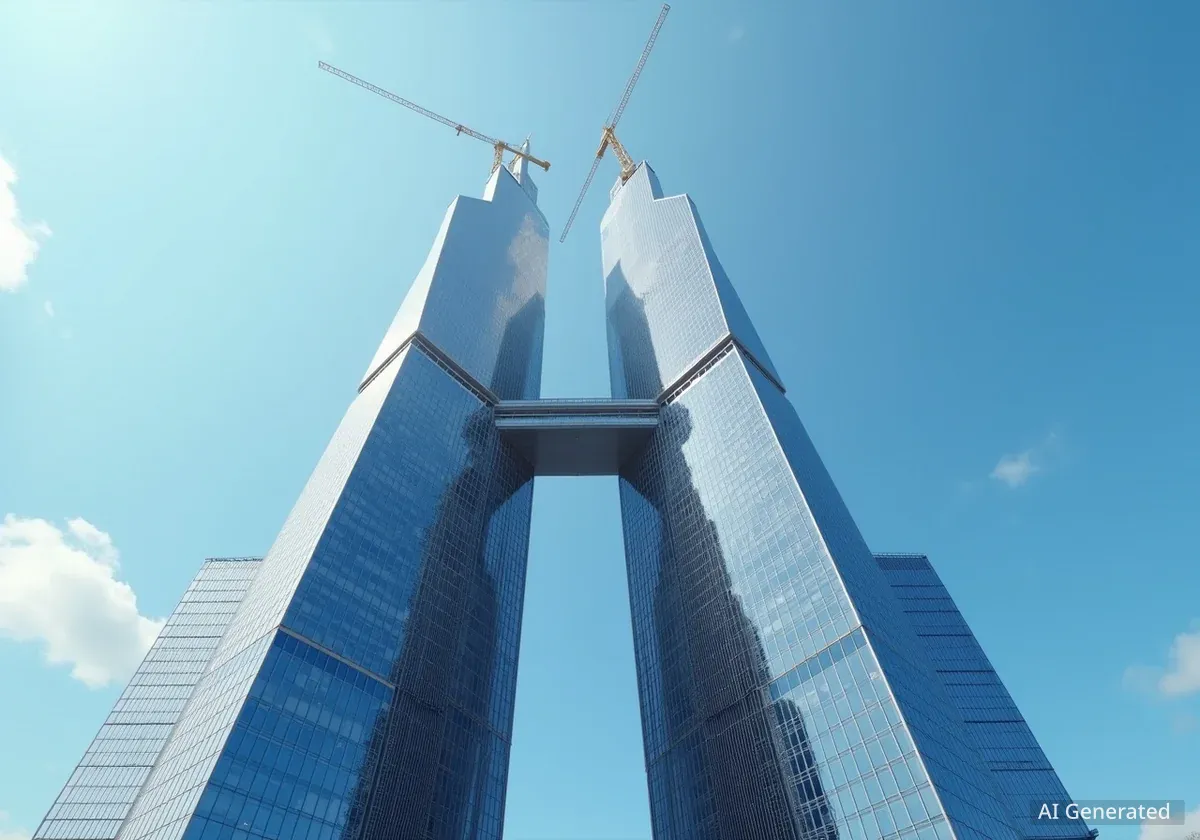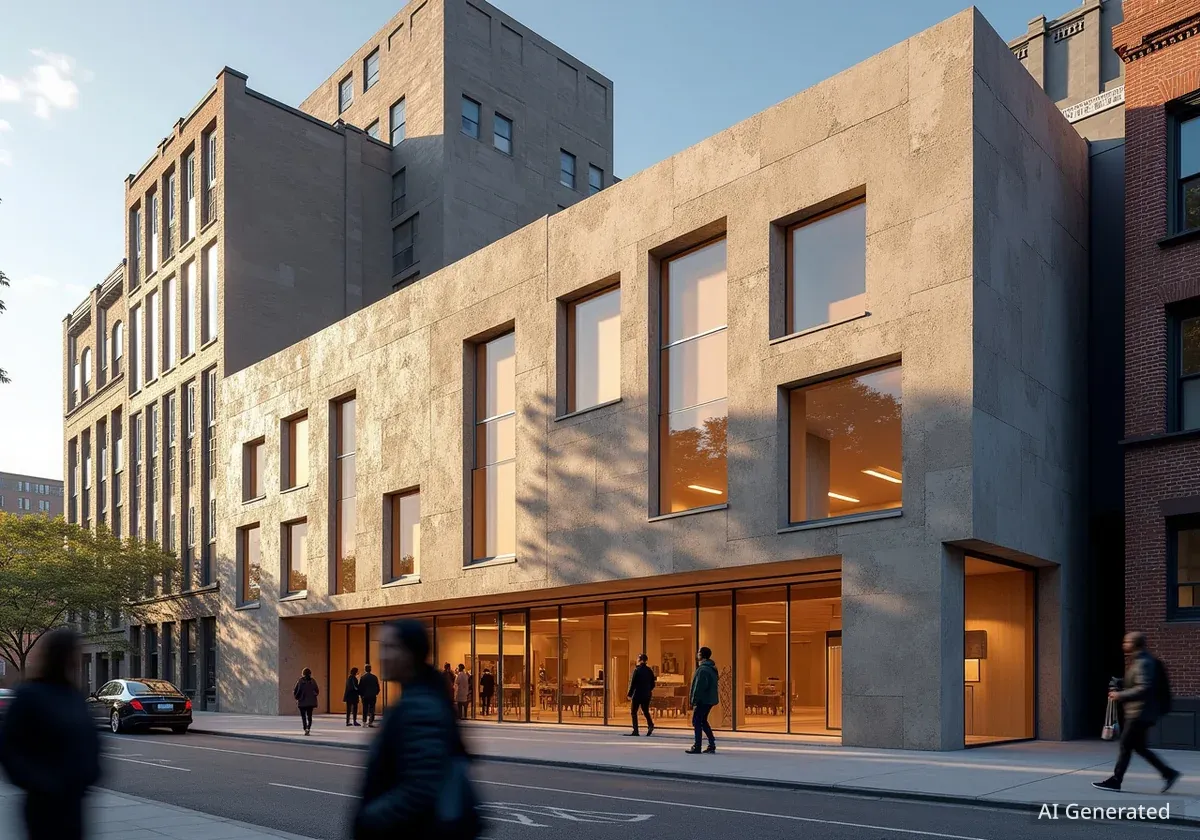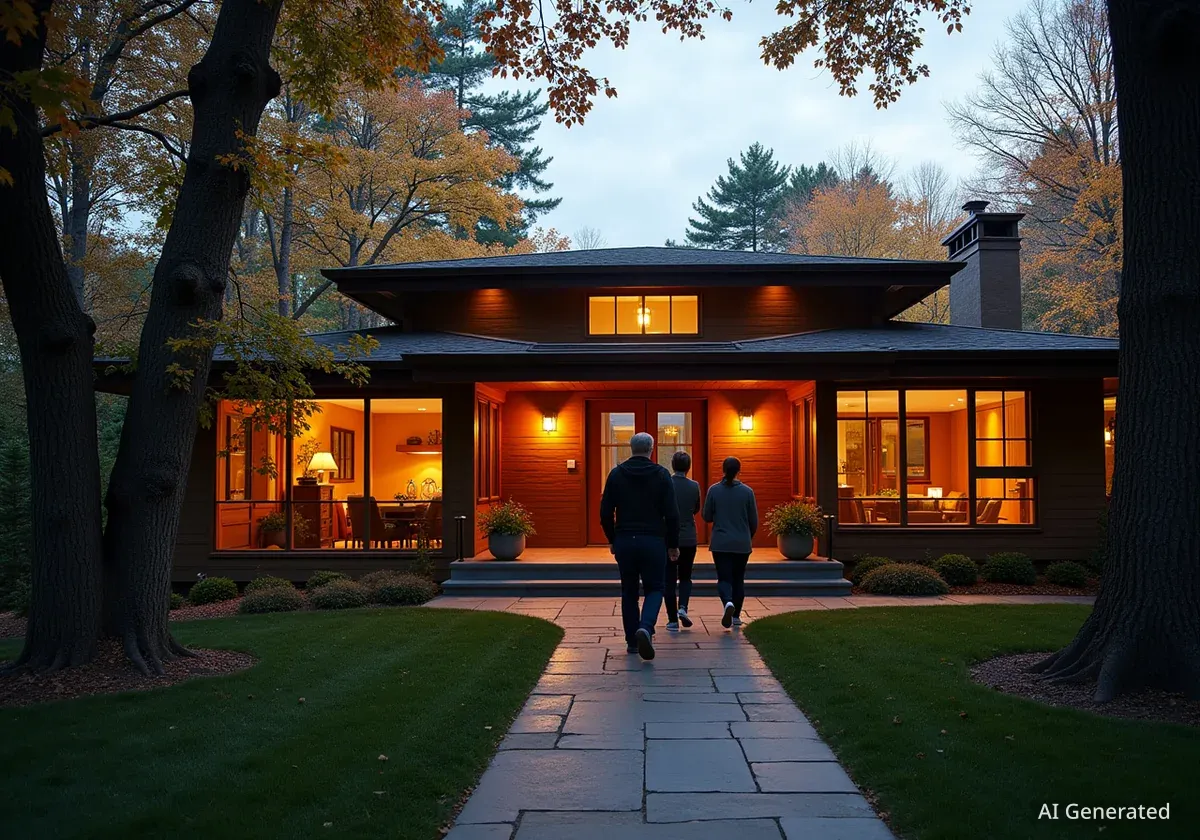Saudi Arabia is advancing construction on the Jeddah Tower, a project designed to become the world's tallest building. This ambitious skyscraper is part of the larger $20 billion Kingdom City development, reflecting Saudi Arabia's strategic vision to diversify its economy and enhance its global standing in commerce and tourism. The tower, once complete, will redefine architectural limits and offer new urban experiences.
Key Takeaways
- The Jeddah Tower is planned to exceed the Burj Khalifa in height.
- It will feature the world's highest observatory and a Sky Terrace.
- A unique Y-shaped design provides efficient space and wide views.
- Advanced engineering ensures stability against strong winds and gravity.
Saudi Arabia's Vision for Global Leadership
The Jeddah Tower represents a significant step in Saudi Arabia's economic transformation. The Kingdom aims to attract substantial international investment. It seeks to elevate its economic position on the global stage. This project is a centerpiece of that strategy.
The tower is more than just a building. It is a symbol of future aspirations. It shows the country's commitment to innovation and progress. The development supports the national goal of becoming a key hub for business and tourism.
Context: Economic Diversification
Saudi Arabia is actively working to reduce its reliance on oil. Projects like Kingdom City and the Jeddah Tower are central to this effort. They aim to boost sectors like tourism, hospitality, and real estate, creating new economic opportunities and jobs.
Architectural Innovation and Design
Adrian Smith + Gordon Gill Architecture (AS+GG) won a global competition to design the Jeddah Tower. Their task was to create a landmark. This landmark needed to break records while fitting into its environment. The design team used lessons from the Burj Khalifa. This helped them push technological boundaries even further.
The Jeddah Tower features a unique Y-shaped footprint. This shape was chosen after evaluating many geometric options. It allows the tower to reach over 1 kilometer in height. This is achieved without significantly increasing the overall floor area. The form is inspired by desert plants. It symbolizes growth and prosperity. These themes are important to Saudi Arabia's modernization.
"The design of the Jeddah Tower is a testament to pushing the boundaries of what is possible in skyscraper construction, integrating both aesthetic appeal and advanced engineering solutions," stated a project architect.
Unique Features: Observatory and Sky Terrace
The Jeddah Tower will include several distinct features. One is the world's highest observatory. It will be on level 157. This is about 2,067 feet above the ground. This observatory will offer wide views of the area. It is expected to become a major attraction.
Another key feature is the Sky Terrace. This terrace is approximately 98 feet in diameter. It was originally planned as a helipad. However, safety concerns led to its repurposing. It now provides an open space for visitors. This space offers a feeling of flying above the city. Balconies are also integrated into the design. They are not common in such tall buildings. These balconies add to the tower's look and provide shade, reducing heat from the sun.
Tower Facts
- Height: Over 1 kilometer (3,281 feet)
- Observatory Level: 157
- Sky Terrace Diameter: Approximately 98 feet
- Expected Completion: August 2028
The Y-Shape: Practical and Aesthetic Benefits
The Y-shaped footprint of the Jeddah Tower is a critical design element. It is not just for looks. This shape offers practical advantages for space use. The three-pronged design ensures that each unit has excellent views. It also maintains privacy for residents. This configuration helps with movement inside the building. It also maximizes natural light entering the spaces.
The tower's core is placed strategically. This optimizes the depth of the lease-span. It achieves a 10:1 height-to-width ratio. The wings are separated by 120 degrees. This provides broad views of Jeddah City. It meets the demand for luxury living and privacy. This thoughtful design makes the Jeddah Tower a model of modern architectural skill.
The efficient layout means more usable space. It enhances the experience for those living and working in the tower. This approach sets a new standard for high-rise residential and commercial developments.
Engineering Feats and Structural Challenges
Building a tower of this size involves significant engineering challenges. The Jeddah Tower uses a combination of pile and raft foundations. These are made of reinforced concrete. They ensure the building's stability. The tower tapers continuously. This design helps manage wind loads and gravitational forces effectively. These forces are crucial considerations for a structure of this scale.
Architects have used advanced concrete pumping methods. They also use high-strength materials. This maintains structural integrity at higher levels. The design avoids complex setbacks. This simplifies construction. It also helps reduce costs and timelines. A jump form system and reusable formwork are also used. These improve the building process. The project focuses on innovation and efficiency.
Structural System and Wind Resistance
The Jeddah Tower has a strong structural system. This system helps it withstand challenges from its extreme height. The Y-shaped footprint and tapered form are vital for stability. They help reduce forces caused by wind. Thick reinforced concrete shear walls form the core and corridors. They act like the web of a wide-flanged beam. This resists bending and twisting stresses. This structural method addresses the technical needs of a very tall building. It also ensures safety and comfort for everyone inside.
The innovative use of materials and structural design places the Jeddah Tower at the forefront of engineering. It sets new benchmarks for future skyscrapers. This project demonstrates human ingenuity and ambition.
Construction Materials
- Concrete Volume: Approximately 500,000 cubic meters
- Foundation Type: Pile and raft system
- Structural Core: Thick reinforced concrete shear walls
- Tapering Design: Continuous to manage wind loads
The Jeddah Tower rises from the desert. It symbolizes Saudi Arabia's goals for economic growth and international importance. The world awaits its completion. This architectural marvel will likely influence future cityscapes. It will also shape global views of urban development.
The project is a bold statement. It shows what is possible when vision meets advanced engineering. It will stand as a testament to human achievement in the 21st century.




